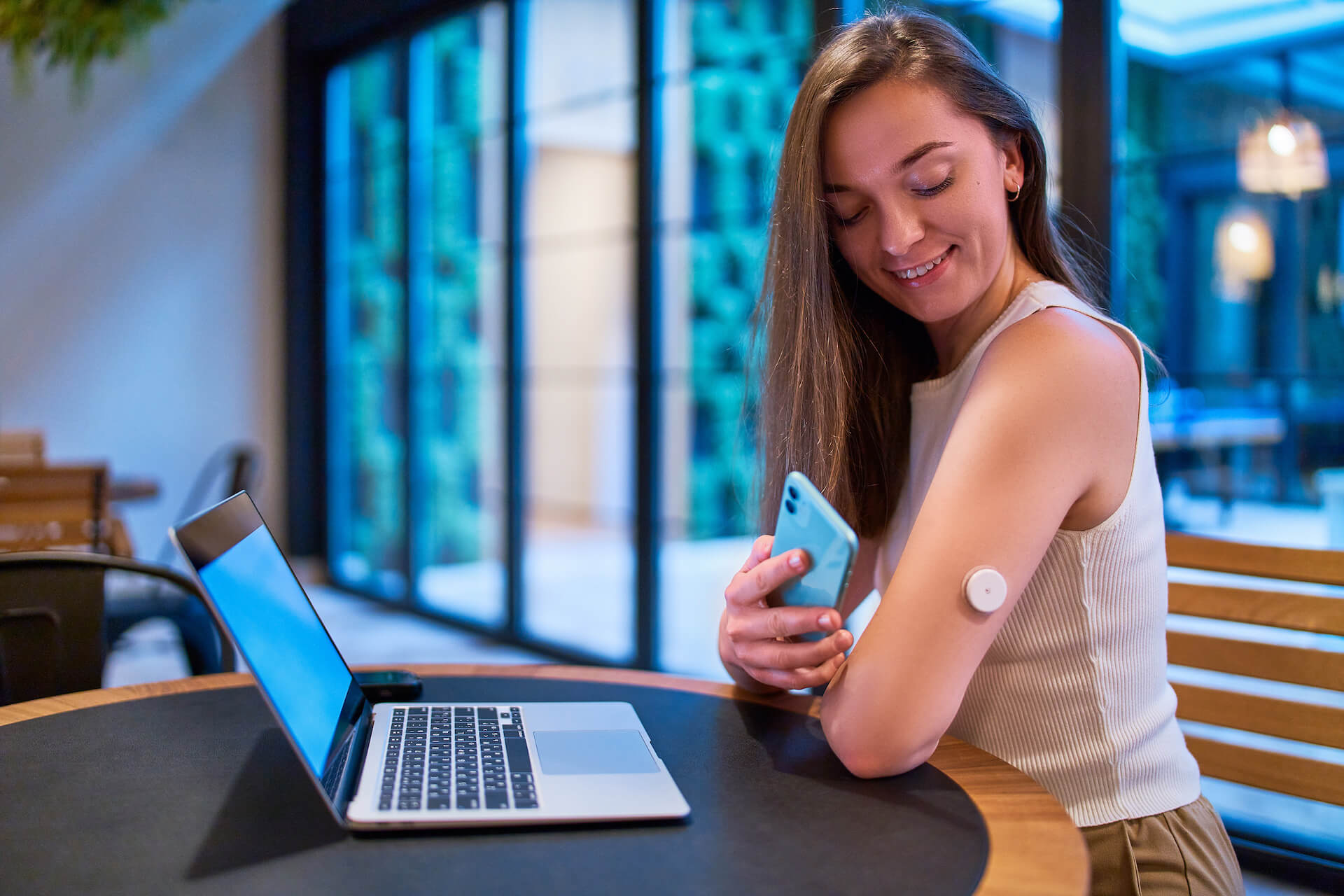Continuous glucose monitoring (CGM) devices are wearable technology that automatically tracks blood glucose levels, also known as blood sugar levels, 24 hours a day. You can then see how these levels change over a few hours or days.
The devices check a tissue glucose every 15 minutes and store the data for up to 8 hours. Bluetooth can be used to transfer the data to an app for analysis. Each sensor lasts 14 days and are disposable. They are not painful to apply, and generally go on the upper arm.
They’re primarily for patients with diabetes, but an increasing number of non-diabetics are using these devices to adjust their diet.
In this article, we’ll cover why people with diabetes need to track their glucose levels, how a CGM works, how one is inserted, and where you can go for a CGM and a customized treatment plan.
Why Is It Important for Diabetics to Monitor Blood Glucose Levels?
Insulin is a vital hormone that regulates blood glucose levels. You can’t survive without it.
With type I diabetes, the body doesn’t produce enough insulin. For those with type 2 diabetes, the body makes insulin but doesn’t use it properly.
People with diabetes must give themselves insulin regularly to keep blood glucose levels under control. Tracking these levels with a CGM tells people with diabetes when insulin is needed and how much their body needs.
People who are not diagnosed as diabetic can have glucose spikes. About 80% of non-diabetics have daily glucose that goes over 150mg/dL. Many “prediabetics” have abnormal glucose readings several times a day.
The monitors can also be used to detect hyperinsulinemia. When blood sugars spike up, then drop precipitously, that can be a sign of higher insulin levels. Many patients wake up at night when they first apply the monitors due to glucose dropping into the 50-60mg/dL range. As they make changes to their eating, this usually resolves and they begin sleeping much better.
How Does a Continuous Glucose Monitor Work?
CGM devices generally work the same way.
Using a CGM starts with placing a small sensor under the skin, usually on the belly or arm, with an applicator. The sensor measures the glucose in the fluid surrounding the cells, and readings occur every few minutes. The information is transmitted wirelessly to a device where you can view it. This could be:
- a handheld device called a receiver, which is similar to a smartphone,
- an app on your smartphone or tablet,
- or an insulin pump.
The sensor has to be changed regularly. For most devices, this is every 7 to 14 days.
Features of a Continuous Glucose Monitor
Many CGMs have special features. These include the ability to:
- download data to a computer or smart device,
- note your meals, exercise, and medications,
- receive an alert when your glucose level is too high or low,
- and share information with your provider.
Additionally, people with diabetes could have fewer fingerstick tests.
What Should Glucose Levels Be?
The ideal range of fasting morning blood sugar is 70 to 85 mg/dL (milligrams per deciliter). If your blood sugar is less than 70, you have hypoglycemia, which is low blood sugar.
Hyperglycemia, or high blood sugar, is blood glucose greater than 125 mg/dL while fasting and greater than 180 mg/dL two hours after eating. Fatigue is one of the most common symptoms. High blood sugar can also cause inflammation and mood swings.
At James Clinic, we consider the glucose to be abnormal if it jumps by more than 40 mg/dL after eating, or tends to be over 90 mg/dL fasting.
Blood sugar spikes happen when blood sugar rises and then falls sharply after you eat. To prevent blood sugar spikes, you can:
- drink more water,
- have more vinegar, particularly apple cider vinegar,
- exercise more,
- keep a healthy weight,
- get enough of the minerals chromium and magnesium,
- get the proper amount of sleep,
- have a low-carb diet,
- eat fewer refined carbs,
- reduce your sugar intake,
- and reduce stress levels.
If you like to read books, we recommend Glucose Revolution: The Life-Changing Power of Balancing Your Blood Sugar by Jessie Inchauspé for supplemental information.
Receive Personalized Care at The James Clinic
Continuous glucose monitors tell you when your glucose goes up or down but not why. At The James Clinic, we can download data from your device, review it for patterns and trends, and give you personalized care based on what they learn.
We look forward to helping you become and stay healthy. To get started with your own continuous glucose monitor, schedule a consult with our office today!

